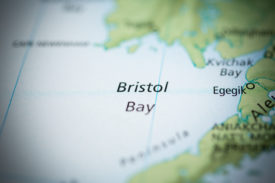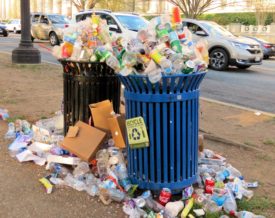
Stuff was one of ’em. I can’t remember if we reviewed it, but I do remember how intrigued I was by the book’s premise—that everyday products, from your Korean-made shoes to your Columbian-grown coffee tell powerful, largely untold stories of the social and environmental impact of seemingly mundane choices.
And the book—slim at 88 pages—was packed with startling facts that told these stories. Producing a cheeseburger requires 700 gallons of water. Coffee is the world’s second largest legal export commodity. Americans spend twice as much on children’s athletic shoes as they do on children’s books. Ten percent of the world’s pesticides are used on cotton farms.
Well, a few years later, I ended up working at Sightline, so it’s clear Stuff (and the organization’s other work) had an impact on me. But I’m far from the only one. On the book’s tenth anniversary, it’s worth sharing a few tidbits of Stuff‘s own secret lives over the years.
Since Stuff was published, we’ve sold or given away some 40,000 copies. It’s been turned into a musical and a high-school video documentary. Teachers and educators have used it in countless ways—including developing a curriculum around the life cycle of a sneaker. Our online curriculum for the book (on our site, pdf) has been downloaded thousands of times.
Just last week, I fielded a call from a film producer (a kinda famous one, even), who is keen on turning it into a feature film. In January, a commercial publisher wanted to update and re-release Stuff (sorry readers, we’re not going to do it).
What’s Stuff’s secret? Someone once told me, perhaps our executive director Alan (who co-authored it, with John Ryan) that Stuff’‘s power isn’t in the facts themselves, but that it asks readers to try on a different worldview, that our everyday choices are much richer and more complicated than we give them credit for. Since Stuff‘s publication, this worldview has become much more common (think of books like Fast Food Nation or the movement to label everything from a product’s carbon “price tag,” to organics standards).
Perhaps a reader (who reviewed the book on Amazon) puts it best:
This is what the book is all about. Becoming quiet and looking around at everything we touch and consume and looking at the bigger picture and ‘seeing’ all the hands, and natural resources it has taken to produce the coffee we drink, water we drink, car we drive, magazines we read, lights we use, clothes we wear, and the list goes on.
Stuff isn’t perfect, of course. If we were to rewrite it today, we’d probably put less burden on the consumer and more on the policies and systems that do much to shape consumer choice. We’d probably cover more in the way of solutions–extended product stewardship for example, and making prices tell the truth. We might give Dana, the protagonist, a little more personality.
But if Stuff has at least slightly altered the worldview of the tens of thousands of people it’s touched, it’s been worth the 88 pages of 93 percent post-consumer waste and 7 percent unused paper scraps and trees that went into printing each book.






